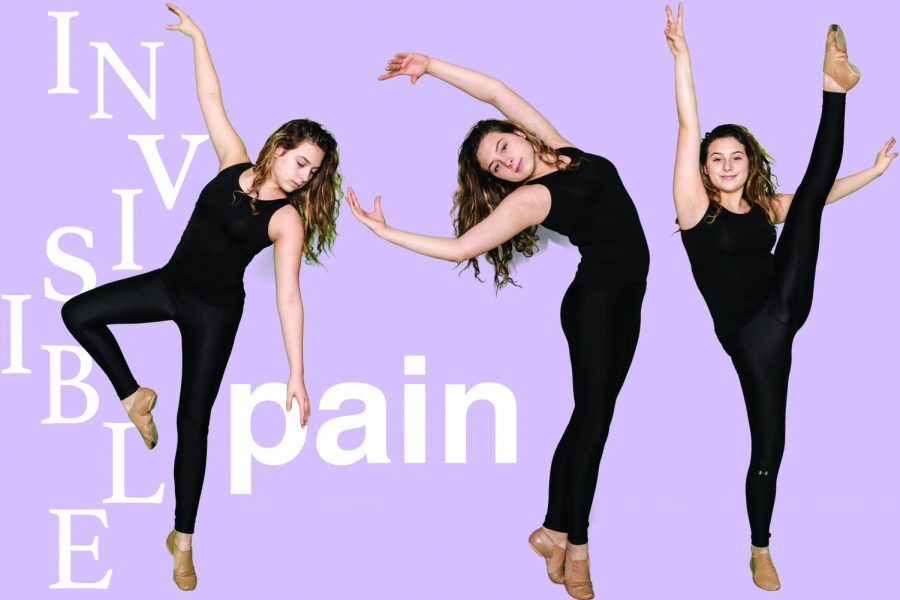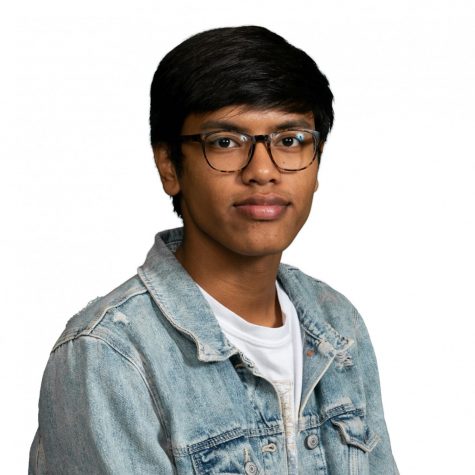Invisible pain
Rare medical abnormality challenges dancer
Photo by Holland Rainwater
December 28, 2018
No one listened to her. They all said she had cramps, but she knew something was wrong. She just wasn’t exactly sure what it was.
Born with a medical abnormality — uterus didelphys — sophomore Mary Jane Bray discovered she was born with not one, but two uteruses, and only one kidney.
For 14 years, this defect went undetected. She was a normal child; a healthy, active kid with no issues or medical scares who enjoyed cooking and dancing. On the outside, she looked like everyone else, but internally, she was different. The cramps she suffered should have been a sign, but they were dismissed as menstrual cramps. Unbelievably, a car wreck turned out to be a miracle in disguise.
“I got in a car wreck last August, and I fractured my foot,” Bray said. “The doctors did a full body CT scan and discovered a mass on my ovaries. At first, they just thought it was a cyst and everyone gets those. I went to the [gynecologist] at Christus St. Michael’s Hospital, and the day after homecoming, I went and they removed my ovary and fallopian tube. Three days after the surgery, they released me to go home and everything was okay.”
However, her recovery was short-lived. The removal of the first ovary ended up causing Bray’s condition to worsen. An X-ray was overlooked by a doctor, which triggered events that led to a more traumatic incident.
“I started feeling pains again. I didn’t think too much about it, so I went back to school. In biology one day, I felt like I was going to pass out,” Bray said. “Later that night, I woke up and felt this horrible pain. My mom took me to the [emergency room], and then they drove me two hours to Dallas Children’s [hospital].They had to perform an emergency surgery. Apparently taking out the one ovary caused the second uterus to open — the one they didn’t know about.”
The tearing of the connection between the newly-found uterus and the first one caused Bray to become septic, a life-threatening condition in which an infection spreads through the bloodstream.
“I became septic because it was letting out toxins into my body, which wasn’t good because my body was shutting down,” Bray said. “I could’ve died if they never found it.”
The surgery took more than just the second uterus and damaged ovary.
“They took out my left ovary and my extra uterus,” Bray said. “I still have the option to have kids, but I can’t have kids by myself. I’m really sad about not being able to get pregnant. I can have a surrogate, but they’re expensive.”
Although Bray can’t give birth naturally, with the help from modern technology she is provided with the ability to have biological children in her future.
“I am gonna freeze my eggs relatively soon, so I do have that chance [for biological children] when the time comes,” Bray said. “I’ll have to have a surrogate. It’s still my kid, but I won’t be able to carry it myself or go through pregnancy. That’s the worst part.”
Through this traumatic ordeal, it would have been easy for Bray to give in to hopelessness. But, she wasn’t alone. In times of need, the people she needed the most, her family, stepped up and guided her through the process.
“My mom feels bad for not believing me, but whenever we found out, she was right on board and was there for me,” Bray said. “Most of my family is in Broken Bow, besides me and my mom and brother, so they came to see me in Dallas when they could.”
The one thing she loved the most came to an immediate stop — dance. Spending two weeks in the hospital affected her flexibility.
“I’ve danced my whole life and after the two surgeries, it affected my flexibility due to the 6-inch [cesarean] section,” Bray said. “The pain from my stomach was brutal. I couldn’t dance like I did [before], it just wasn’t the same.”
Through rigorous physical therapy and numerous dance practices, Bray returned to dance in time for high stepper auditions. She didn’t allow this threat to her dancing to stop her, and was determined to persevere.
“It’s been eight weeks, and now I am all better. I have a numbness in my leg, but I can still use it,” Bray said. “I’ve worked really hard on my core. I tried out for HighSteppers, making the team.”
An experience like this doesn’t leave one’s mind easily. Though her surgeries were troubling, Bray was left with a new perception of the world; one that shapes how she lives her day-to-day and her view of those around her.
“It’s made me think about people different,” Bray said. “You would’ve never known I went through all of that just by looking at me. Although my experience wasn’t as traumatic as others, some people go through much more, so just be nice to people.”















